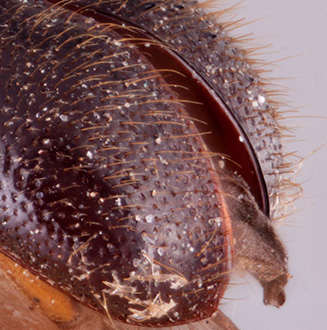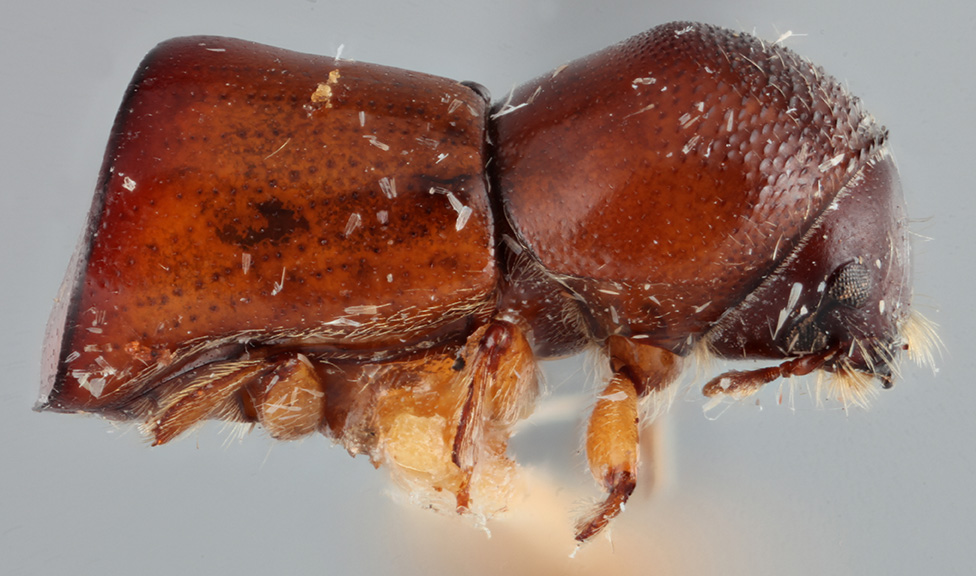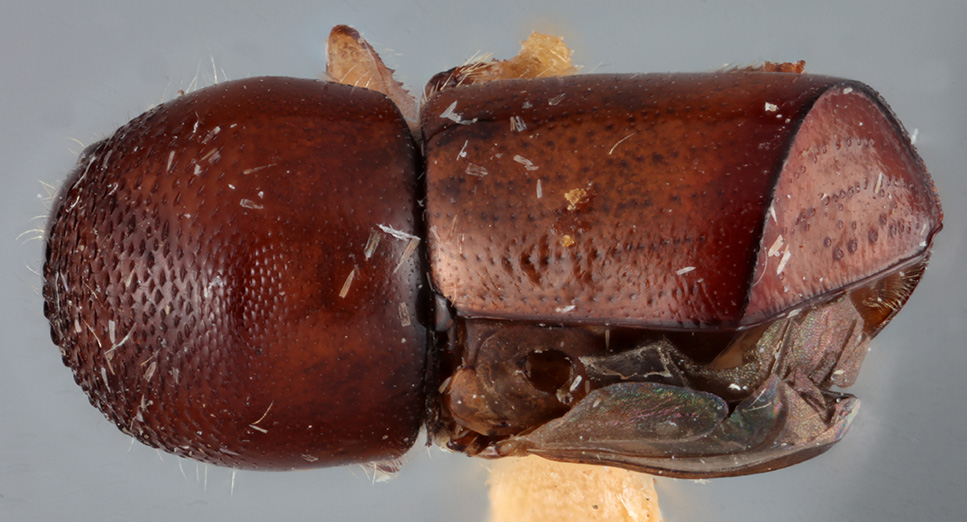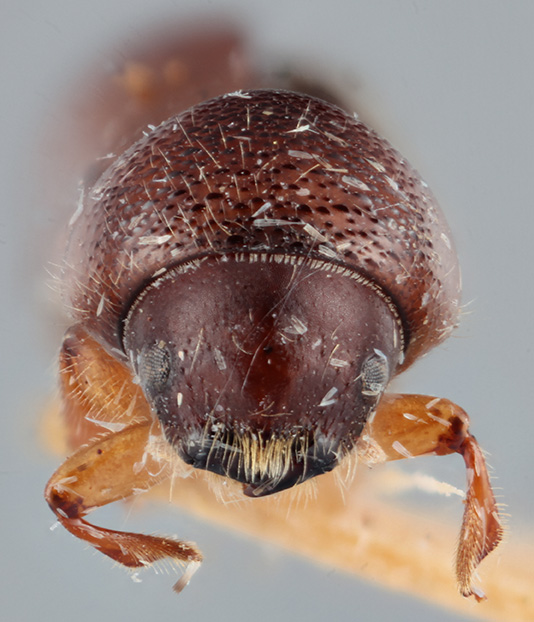Amasa opalescens
|
Amasa opalescens lectotype lateral; R.K. Osborn |
|
Amasa opalescens lectotype dorsal; R.K. Osborn |
|
Amasa opalescens lectotype declivity; R.K. Osborn |
|
Amasa opalescens lectotype frontal; R.K. Osborn |
Taxonomic history
Xyleborus opalescens Schedl, 1937a: 550.
Amasa opalescens (Schedl): Wood and Bright, 1992: 684.
Diagnosis
4.5−4.8 mm long (4.70 mm long; n = 3); 2.4−2.5 times as long as wide. This species can be distinguished by its large size; pronotumpronotum:
the dorsal surface of the thorax
rounded, robust from laterallateral:
pertaining to the side
 view (type 5); declivitaldeclivital:
view (type 5); declivitaldeclivital:
pertaining to the elytral declivity
interstriae 1 unarmed (lacking granulesgranule:
a small rounded protuberance, like grains of sand
 ) and flat; strial punctures very large, irregularly spaced; and declivitaldeclivital:
) and flat; strial punctures very large, irregularly spaced; and declivitaldeclivital:
pertaining to the elytral declivity
surface appearing smooth and opalescentopalescent:
iridescent, showing vaying colors
 .
.
May be confused with
Amasa beesoni, A. cylindrotomica, A. schlichii
Distribution
East & West Malaysia, Thailand, Vietnam
Host plants
Recorded only from species of Eugenia and Tristania (Myrtaceae), and possibly with a fixed association with this family (Browne 1961bBrowne 1961b:
Browne FG. 1961b. The biology of Malayan Scolytidae and Platypodidae. Malayan Forest Records 22: 1-255.).
DNA data
specimens not available for sequencing





